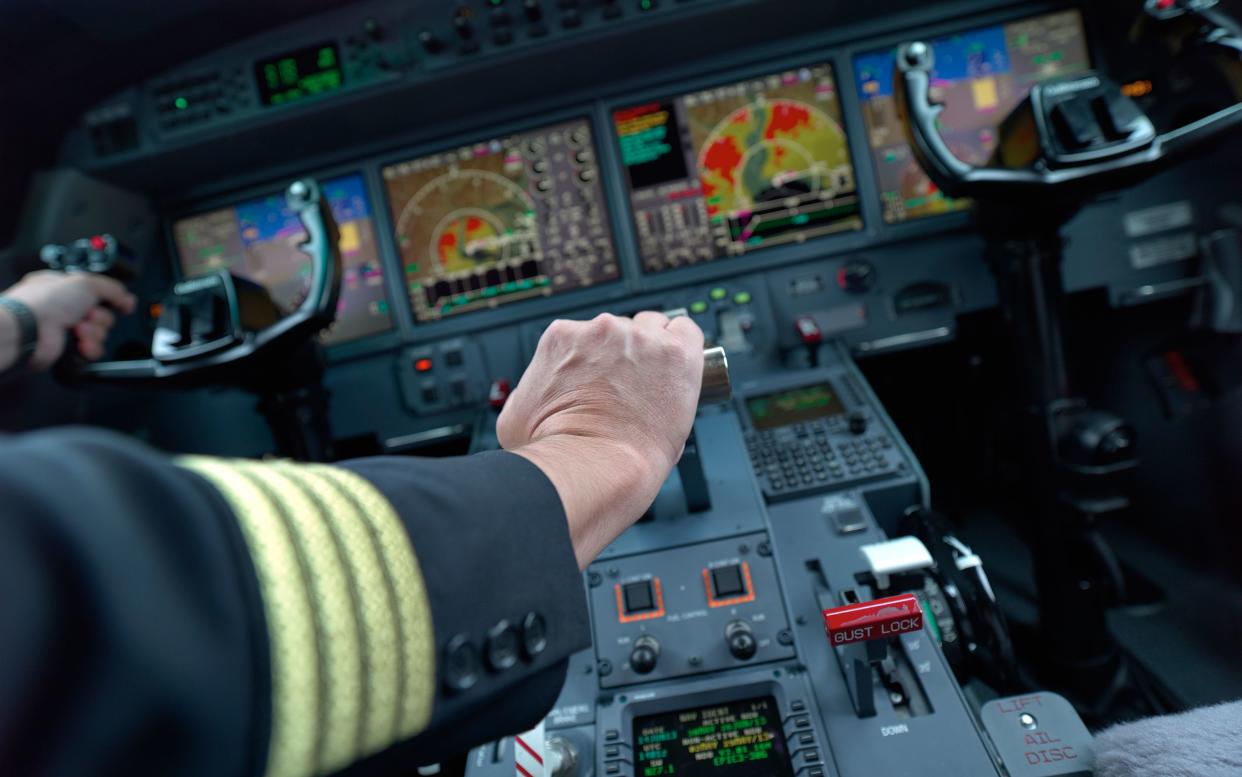The five coolest buttons in a 747 cockpit, according to a BA pilot

One of the greatest pleasures of being an airline pilot - aside from the simple joy of flying - is the opportunity to meet some of the travellers on board our flights.
These interactions are particularly fun when they take place in our office - that is, in the cockpit itself. (Cockpit visits are sometimes possible before departure, depending on our workload; otherwise, they’re often possible after arrival at the gate. Ask your cabin crew if you’re interested - and no, you don’t have to be a kid, or be travelling with children, to do so.)
When we do welcome visitors to the cockpit, there’s usually time for photographs and for a few questions.
These questions often have to do with the numerous controls, buttons, and switches that line nearly every surface in the cockpit. How do we ever learn which does what? (That’s our job.) How many buttons are there, anyway? (Hundreds.) And which ones are the most important?
In a recent book, How to Land a Plane, I talk about how planes work—how they stay up in the sky, and how pilots control them.
When I show you around the cockpit in that book, I focus mostly on the big-ticket items of obvious importance—the control wheel (for banking left or right) the control column (to quote a Father Ted-inspired flight instructor of mine: push forward on the column, and cows get bigger; pull back, and cows get smaller).

I point out the throttles or thrust levers, the flaps (which effectively change the wing’s size and shape, to allow us to fly more slowly) and the landing gear lever (as important a lever as there could possibly be).
But there are hundreds of other buttons, controls, switches and levers in a complex airliner like the Boeing 747. Many of their functions are less obvious than the control column, a little more subtle than the landing gear, and they’re not always easy for visitors to appreciate.
But each controls an utterly ingenious bit of technology or a carefully crafted aspect of what in the wider tech world is now called ‘user experience’.

Here are five of the coolest buttons and switches to ask about on your next visit to a cockpit.
1. The EXECUTE (or EXEC) key
In flight, we follow a route that’s been carefully programmed into the flight computers. That’s true whether we’re flying the aeroplane manually or through the automatic pilot. The route in the computer is checked before take-off, of course.
But in flight, we often need to modify the route - perhaps we’ve been given a shortcut by air traffic control, or perhaps the landing runway at our destination has changed.
Naturally, we want to be able to prepare and check the modification to the route in the on-board computers before the plane actually starts to follow it. So, as we prepare the changes, a light on the Execute key illuminates.

When we’re satisfied with the changes we’ve prepared, we press the key to ‘execute’ our changes. The light goes out, the existing route is replaced by the modified one, which the plane will follow exactly.
2. The mode selectors for the Inertial Reference Systems
These are the switches for what’s probably the most remarkable bit of aerospace technology you’ve never heard of. GPS is an amazing innovation, to be sure, but to me inertial reference systems are far cooler. Once configured before each flight, they help us know where we are without any reference to the outside world.
Think of that - no GPS satellite signals are needed, no star sightings, nothing. Inside the black box, each of these three powerful digital brains just knows.

Some of this technology was developed in part for the Apollo programme, and it was one of the most revolutionary technologies on board the Boeing 747-100 when it first took flight in 1969. Modern inertial systems have a variety of important functions in addition to navigation.
They can help us distinguish our own speed and direction from those of the wind that carries us. And they can sense gravity, which tell us which way is up, for example—particularly useful when flying in cloud.
There’s something else remarkable about inertial systems. Before flight, they require some time (typically a few minutes) at the gate when the aircraft is completely still.
Technically, they’re using this stillness to sense two important things. One is gravity, and the other is the earth’s rotation.
You could say that they’re using this quiet time to quite literally get their bearings. Or, since this process is called ‘alignment’, you might think of them as grabbing a moment of Zen, before they’re ready to help guide us across the heavens.
3. The START switches
In an environment as complex as an airliner cockpit, there’s a huge premium put on simplicity—on buttons that do just what ‘it says on the tin’. Visitors to the cockpit often ask how we start the engines, and it’s hard to answer without sounding as if we’re dumbing it down.
But it really is (almost) this simple. To start the engines, pull the start switch, and then move the master switch for each engine to RUN.
If everything else is correctly configured (and to be honest, there’s quite a lot that needs to be correctly configured) the selected engine or engines will soon start. On a plane like the 747, we typically start two engines at a time.
4. The MIC/INTERPHONE switch
Airliners are designed to be flown by two pilots, which means we spend a lot of time talking to each other. In flight, though, we typically wear pricey noise-cancelling headsets due to the sound of the engines and the airflow.
So, to speak to each other, and to do so without taking our hands off the controls, we can flip this switch to the interphone position and speak to each other normally.
We can even latch the interphone on - remembering, of course, to turn it off before we eat or drink, so our colleagues don’t have to listen to the high-fidelity details of our lunch.
Of course, while we talk a lot to each other, we also talk a lot to air traffic controllers. If we flip this switch the other way, to the MIC position, we can speak on the radio - again, without moving our hands from the wheel.
5. The External Power (EXT PWR) Control switches
One of the simplest but best questions that we’re asked - often by children - has to do with how an aircraft is powered while it’s parked at the gate. After all, if the engines are shut down, what’s keeping the lights on?
There are a couple of good answers to this. Most aircraft have what’s called an APU, or Auxiliary Power Unit.
It’s a little jet engine in the tail of the aircraft that can power the aircraft on the ground, and sometimes serve as a backup power source in flight. (Next time you look at the back of an aircraft, note the APU’s little exhaust hole, under the tail fin).
But an airliner can also be plugged directly into the airport’s electrical power supply, which saves fuel and reduces emissions and noise.
A plane like the 747 has two such ‘outlets’, under the nose. Two cockpit buttons select these power supplies. Next time you’re at the gate, look for the two thick cables that run up into the area around the nosewheel.
In the cabin, you may hear a click or notice a brief flicker of the lights just before departure. That’s the pilots turning on the APU and deselecting the external power—an auspicious signal that your jet is at last unplugged from the world, and your journey across it is about to begin.
Mark Vanhoenacker is a Senior First Officer for British Airways and the bestselling author of Skyfaring. His latest book, How to Land a Plane, was published September 21. You can follow him on Twitter and Facebook.


